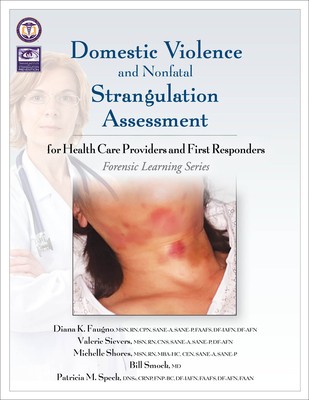
- We will send in 10–14 business days.
- Author: Diana K Faugno
- Publisher: STM Learning
- Year: 2020
- Pages: 160
- ISBN-10: 1936590832
- ISBN-13: 9781936590834
- Format: 21.6 x 27.9 x 1.5 cm, softcover
- Language: English
- SAVE -10% with code: EXTRA
Domestic Violence and Nonfatal Strangulation Assessment (e-book) (used book) | bookbook.eu
Reviews
Description
Domestic Violence and Nonfatal Strangulation Assessment is designed to standardize anatomic nomenclature, as it relates to the head and neck, for both new and experienced sexual assault nurse examiners (SANEs) and sexual assault forensic examiners (SAFEs), first responders, medical residents and physicians, nursing students, and nurse practitioners, including nurse midwives, women's health nurse practitioners, pediatric nurse practitioners, and forensic nurse practitioners. The text will teach readers the language of evidence-based evaluative methods of care for strangulation patients in domestic violence situations.
Fifteen strangulation case studies with a clear history, photographic representation, and confirmation of anatomic landmarks and injuries, along with discussions about existing conditions and their influence, identification of injury, evidence-based collection techniques, and treatment based on current standards of practice. Chapters will also include best practice recommendations and other tools to support evaluation and documentation. Offering this workbook to first responders and health care providers will help fulfill their need for basic, peer-reviewed information and will contribute to continuing competence in care for strangulation patients.
EXTRA 10 % discount with code: EXTRA
The promotion ends in 12d.04:36:16
The discount code is valid when purchasing from 10 €. Discounts do not stack.
- Author: Diana K Faugno
- Publisher: STM Learning
- Year: 2020
- Pages: 160
- ISBN-10: 1936590832
- ISBN-13: 9781936590834
- Format: 21.6 x 27.9 x 1.5 cm, softcover
- Language: English English
Domestic Violence and Nonfatal Strangulation Assessment is designed to standardize anatomic nomenclature, as it relates to the head and neck, for both new and experienced sexual assault nurse examiners (SANEs) and sexual assault forensic examiners (SAFEs), first responders, medical residents and physicians, nursing students, and nurse practitioners, including nurse midwives, women's health nurse practitioners, pediatric nurse practitioners, and forensic nurse practitioners. The text will teach readers the language of evidence-based evaluative methods of care for strangulation patients in domestic violence situations.
Fifteen strangulation case studies with a clear history, photographic representation, and confirmation of anatomic landmarks and injuries, along with discussions about existing conditions and their influence, identification of injury, evidence-based collection techniques, and treatment based on current standards of practice. Chapters will also include best practice recommendations and other tools to support evaluation and documentation. Offering this workbook to first responders and health care providers will help fulfill their need for basic, peer-reviewed information and will contribute to continuing competence in care for strangulation patients.


Reviews